Reviews5

ELEGY FOR THE ARCTIC
Review by Arindam Bhunia Tribute by Ludovico Einaudi & Greenpeace
As we the human beings are successively progressing, the earth by degrees is diminishing it’s ethnic and perpetual beauty. Bricks, concretes and stones are taking over greeneries and watery lands. As a result, day by day Global-Warming is increasing at an alarming rate. The effects of Global Warming in the Arctic include rising temperatures, loss of sea ice. The melting of Arctic ice caps is likely to increase traffic in and the commercial viability of the Northern Sea Route. But it is not the end rather it is the emergence of the Earth’s destruction. By his drone film Elegy for the Arctic director Raul Alaejos has given us this indispensable message. What we usually expect from a Drone film? Some extraordinary, breathtaking and eye-catching landscape will be visible. But Elegy for the Arctic gives us not only the bona fide scenario of the Arctic Region but makes us feel what we are going to lose. We can also experience the Heavenly beauty of Wahlenbergbreen Glacier of Norway and the beauty elevates by the stunning melody of piano.
Arctic regions are in menace and we the human beings only can be the savior. This unique and specific message has made film director Raul Alaejo’s Drone film a nonpareil. The effects of Global Warming in the Arctic region are not only loss of sea ice also melting of the Greenland ice sheet. The current Arctic warming is leading to fears of ancient carbon being released from thawing permafrost, leading to methane and carbon dioxide production by microorganisms. With sea ice rapidly disappearing the Arctic faces expands fishing, offshore oil and gas development and shipping. These activities always bring huge risks for ocean wildlife. In fact these regions are home to a surprising range of perfectly evolved animals including polar bears, seals, walruses, penguins etc. Many humans are now over hunting and destroying the environment. People that hunt in the tundra are now over hunting, which can also cause some animals to become endangered, and effects all other parts of the food chain. Pollution has also led to global warming which has caused melting and habitat loss in the tundra as well. The Arctic is the most extraordinary region on the planet and it is not surprising that it is called mysterious and enigmatic, because it is an area that holds many different wonders. It is the backbone of the earth. It is our responsibility to cherish this treasure. And in this case drone film Elegy for the Arctic is undoubtedly a front runner.
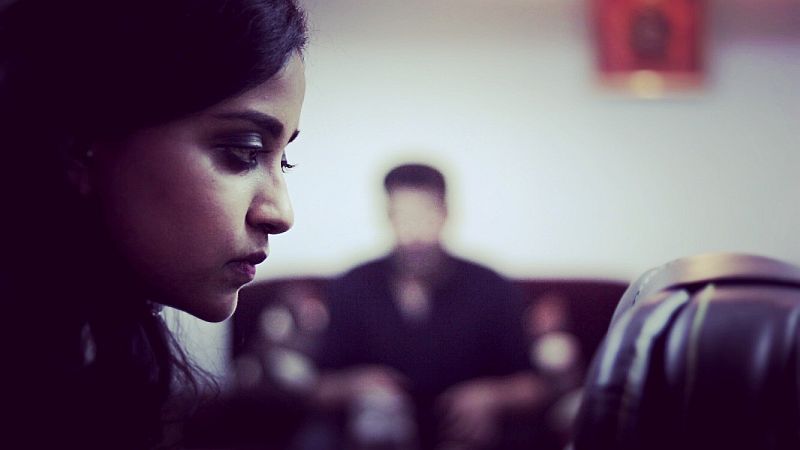
LET'S TALK ABOUT "IT"
Review by Panchali Kar A film by Kshitij Sharma This provoking film, Let's Talk About "It" is a highly engaging horror/ psychological thriller by film director Kshitij Sharma. It deals with the layers of human mind and it's relation with fear. Fear sprouts when logic ends; when a situation goes out of the hand in a way that logic can't justify it's courses, fear creeps in. Fear is an inevitable part of the construct of human psychology, negating the existence of fear with the help of clinical techniques isn't always the best thing to do. Let's Talk About "It" unfolds the premise of fear and validates the same till the end. Dr. Kavita Mukherjee is a renowned psychiatrist; smart, independent, charming, successful, based at Delhi. She comes across various patients everyday. Virat Mahajan comes to her chamber being intimidated by an invisible being, who follows him all the time and causes nuisance in his house. Kavita diagnoses him for paranoia and schizophrenia. Soon after she met her new patient, unpredictable and uncanny things started piling up in her own life. The deeper she digged into the case, the more complex things grew in her surroundings until she realized she can't get over fear all the time. Loved the idea of personification of fear and the climax, or the anti-climax rather. This film is totally performance oriented. Film director Kshitij Sharma was brilliant as Virat Mahajan. He has received the award for best actor from CICFF for this film. Deeya Dey as Kavita is beyond perfection. Her realistic appearance and performance held up the story. Cinematography was decent. Loved the use of mobile flash as the only source of light, at times. Editing was crisp. Art direction was fine, however too many elements within Kavita's chamber, like Durga show piece, Tagore, Vivekananda, were not required to establish that she's a Bengali. The movie was neatly paced. The horror sequences were skillful designed in low light. Overall, a thought provoking movie.

BETWEEN SECONDS
"Most of the moments that make up our life would be delightful if they were not shadowed by the future or the past and that usually we are miserable only by virtue of what we remember or what we expect…” Review by Shevaun Cavanaugh Kastl Film by Nora Jaenicke Time...It’s the greatest gift we’ve been given here on earth and yet the importance of which we have somehow lost sight of. We measure our time in different ways: heartbeats, heartbreaks, ticking clocks that mark the hours we spend working for our dreams or waiting in frustration for them to be realized. Seconds, minutes, hours.. all with a TICK, TICK, TICK, sometimes loud and incessant, sometimes barely audible - a distant echo of moving hands, signifying a moment passed, a moment gone. It’s an ambitious theme to tackle, most likely due to its abstract nature. I’ve seen many a filmmaker confuse concept with character and the result is something like a blurry photograph where the subject moved, or oily impressions on canvas of vague, indistinct entities on a crowded street. Their faces notional, and we may only speculate how the concept of time affects their day to day lives. I will not hide the fact that I am not a fan of such films. I don’t want to speculate. I want to feel. I want to empathize. And, for me, this is only possible by bearing witness to the consequence of time as it changes the course of real, breathing, feeling characters come to life on screen. ”Between Seconds”, a short film by Writer/Director Nora Jaenicke is this month’s recipient for BEST WOMEN’S FILM. And deservedly so. She has taken the aforementioned concept of time and given it a cinematic anchor in two beautifully shaded characters who are out of sync with their own artistic and emotional rhythm. Adrian, a classically trained pianist, loses the ability to finish a very personal musical composition when thoughts of his ex-girlfriend flood his mind. Alicia, a struggling opera singer, is lost in frustration and fear when her voice proves out of sync with the very music she used to perform with ease. Both Adrian and Alicia find themselves at odds with the passage of time and stuck in a sort of creative inertia: Adrian seeking to turn back the clock to recapture that perfect moment when love was his muse; Alicia willing with all her might to turn time forward to that perfect performance when her voice returns to the tune of an ever elusive melody. When a mysterious envelope appears with an intriguing invitation, both characters find themselves on a journey through time, between seconds, if you will, to one Cafe Surreal - a fantastical Piano Bar Jaenicke created to serve as a sort of ChronoArcadia, complete with an oracular Bartender who helps nudge both Adrian and Alicia back into step with the tempo of their lives, and their music. It is here that they will encounter one another and connect, artistically and emotionally. A connection that takes but a moment to occur for two strangers whose lives will be changed forever. The film has a stagy, theatrical feel, burlesque even, at times. Especially in Cafe Surreal, where the Musicians and Bar Patrons are costumed extravagantly and wear make-up like vaudevillian players. They are all part of a fastidious design plan by Jaenicke to transport the viewer to a time and place that is not of this world. It is another dimension entirely, fantastical and intensely provocative. Each set is dressed with great care to enhance the journey of whomever inhabits the space. In that sense, the characters are like Travelers and each land they travel through has different views and sights to see. Jaenicke, who has a background in set design, explained in an online interview that this is how the project began. “It actually started with a vintage View-Master with a slide reel. It had been sitting on my nightstand for years before starting film production... I was obsessed with this particular prop because with the rotation of images it reminded me of the passing of time…” The film’s climax is a thing of beauty. A vacant piano bench. A solo microphone. The stage is set for a performance, but all is still in anticipation for these two strangers to hit their marks. “I’m waiting for the piano player,” she says. “I’m a piano player,” Adrian responds. As the Bartender looks on, a smile ghosting on his lips, Alicia takes the stage. Adrian sits at the piano. That the two make music together and leave as a couple may sound simplistic, but is quite the opposite under Jaenicke's skillful direction. The performance is utterly unique, a melding of two distinct styles that fall into a fresh, completely original and surprising rhythm by riffing off each other. It was a bit jarring, like a splash of cold water musically, and I loved it. I think if they had launched into a smooth jazz standard I would have been disappointed, because that’s not realistic. And even if we are in Cafe Surreal, it would have undermined the intentional and insightful design of the film. This is a story about two people who are out of sync artistically and emotionally because they are clinging to what used to be and trying to recreate it. What lies ahead is something new, something different. And that IS jarring.. and exhilarating. And it is that same exhilaration that I felt as a viewer watching Adrian and Alicia depart the Cafe together. Having shared such an experience with someone they had no idea existed before now. It’s not about “They lived happily ever after.” It’s about “They lived!” When I asked Jaenicke what inspired her to make this film, she answered with this quote, which I promised to share: "Most of the moments that make up our life would be delightful if they were not shadowed by the future or the past and that usually we are miserable only by virtue of what we remember or what we expect…” She went on to elaborate: “I always thought of each of us carrying a clock within, which ticks at a very unique pace, perhaps what dictates our destiny, if there is such a thing. Looking back, there have been situations that I wasn't able to fully experience or accept into my life because it just wasn't the right time. I wasn't ready for them. No matter how much I tried to turn the hand of the clock back later on... My inner clock and the outer one just weren't in sync, so to say.
I still feel that I would somehow continue to carry all those moments within me. It's what memories and dreams are made of, I guess. So I wonder, is it about the "what" or the "when"? How do these dimensions intersect? And what's our responsibility in all this?” After I spoke with Jaenicke, I watched the film again. This time the profundity of what she said really hit me in two major ways. First off, there is a beautiful scene in which Adrian recalls a memory of his ex-girlfriend Jayne on his sofa, scrolling through images in that aforementioned View-Master Prop that started it all. She comes across a picture of them together and smiles “I wonder what it takes to take the perfect picture?” She goes on to reference the famous street Photographer Henri Cartier-Bresson and his book “The Mind’s Eye”. Of the picture-story, the “peak” moment captured and immortalized on film, he called it the joint operation between the brain, the eye and the heart. “A second before and it hasn’t yet arrived. A second later and it’s already gone.” The homage to Cartier-Bresson is the kind of beautiful, delicate detail that makes this film so rich and layered. Aren’t we all striving for that “decisive moment?” That “peak moment” when the timing is just right and what we see and feel lines up perfectly? And what of the danger that we might get so caught up in the perfect composition, setting the perfect scene, waiting and hoping for the perfect moment, that we miss it entirely? And that brings me to the second impact.. Cafe Surreal represents a place where all those wished-away moments exist. The might-have-beens had we only looked up from our View finder. We are feeling creatures living in a world of intangibles.. the song we might sing, the melody we might hear, the soul we might connect with if the timing were right. We can, we do lose ourselves in speculation over what might be if time would cooperate. But since time is a thing outside our control, we are inevitably doomed to miss such chances if we focus on the passing of time rather than the state of being it allows. Wouldn’t it be wonderful if we were to find a magenta-colored envelope waiting with our name to remind us of the time? And that it exists only in our favor if we forget that it exists at all?

CONTRASTS OF PERU
“You are sometimes overwhelmed by impressions. You can never comprehend everything, but are provoked into the urge to see more - to take in as much as you can before the moment passes.” Review by Shevaun Cavanaugh Kastl From film director and cinematographer Sebastian Klinger It isn’t often that I review a documentary. Even less so that I review a travel documentary. My heart beats for short fiction. Character-driven Indie films. But when I sat down and watched Contrasts of Peru, I was left breathless. And when, to my delight, it received top honors in this month’s festival for Best Travel Film, I immediately requested the honor of authoring this review for our May issue of Cult Critic. Because Contrasts of Peru IS character-driven. The people of Peru, with their “bustling hearts pounding” as they pass knowledge and culture from one generation to the next, are showcased with cinematic reverence from director and cinematographer Sebastian Klinger. In an online interview, Klinger explained the need to honor the authentic Peru. The vastly different landscapes, certainly, but most importantly, the people: Their joy, hardship, beauty, traditions.. “Peru,” Klinger exclaims, “is more than Machu Picchu.” Contrasts of Peru transcends the average travel doc. Klinger's homage to the country and its people is cinematic artistry and every moment of the three minute and fifty-four second movie is captivating. Yes, there are awesome drone shots of the vast dusty desert dunes and the lush cape of jungle - “the lungs of the earth” as Klinger’s Narrator describes. But there is a style, a deliberate design to the film that one cannot help but marvel at. It is epic and intimate all at once. At times frenetic, rapid-fire images of those bustling Peruvian hearts will knock you off-kilter only to find your balance again with a jump cut to a scenic wide shot with a breathtaking view of the Pacific Coast. This is not an accident. Klinger designed the film to simulate the viewer experience with that of traveling to a foreign country. And those “moments” are exactly what Klinger was after. Klinger: “I traveled with a minimal set of equipment consisting of the handy yet professional Sony A7s II camera and two Canon lenses. That way I was extremely agile and able to get close to the people to capture their emotions without being perceived as a nuisance. Within seconds I had the camera ready before the unique moment disappears forever.
I think this quickness combined with an intuitive eye for beautiful cinematography is what benefited the film the most.” I would agree. These unique moments of emotion drive the film. The pride, the patriotism, the camaraderie. One moment, we are among children running barefoot through a maze of city streets, chasing bubbles through the air; we follow their squeals of delight through a labyrinth of alleyways and suddenly we are in The Highlands, navigating the intricate design of centuries-old stonework. An Elder, in ceremonial dress, plays a pan flute, before taking a moment to rest, eyes closed, a smile of deep satisfaction ghosting on his thin lips as if committing the music to memory forever. Young boys march in a Peruvian Parade; Local Fisherman brave a turbulent sea; Men, Women and Children weave colorful threads in a centuries-old custom to produce the country’s finest textiles. And through it all, faces. Faces wearing expressions of strength, devotion, celebration and pride. Everything about this piece is intentional, right down to the tempo of the film. Klinger's film moves fast but fluidly. Images come in emotional surges, much like the waves of Peru’s Pacific Coast. But true to its title, they will change in an instant, with yet another swell of emotional contrast and conflict, all to the musical backdrop of a vivacious, at times wild, solo Piano. The overall rhythm and style of dynamic transition is reminiscent of Leonardo Dalessandri’s "Watchtower of Turkey,” which Klinger drew inspiration from. But he goes a step further, adding Spanish Narration throughout the film to impart some of the history and regional variety of the landscape and culture. Yes, Contrasts of Peru is quite a cinematic accomplishment for Sebastian Klinger, who, for such a young age appears to be somewhat of an old soul. Perhaps that is why he felt the enigmatic pull of a country built on top of ancient cultures and felt the need to do his part to preserve their legacy. His work is exquisitely honest, provocative, evocative and with a purity of intent that is rare to find. Klinger: “Many people asked me what my goal is with this film. Actually I don't have one. This wasn’t a project for money.” He fell in love. With the country, the people of Peru. It was an ambitious undertaking that required a lot of self-sacrifice, and at times, Klinger confides he wondered whether he could truly do it. But here we are. Klinger: “The most important thing to me was the people. I wanted to do right by them.” Mission accomplished, I would say. Contrasts of Peru is a fantastic trip through a country whose cultural legacy is an inspiration to all and most definitely a trip worth taking.
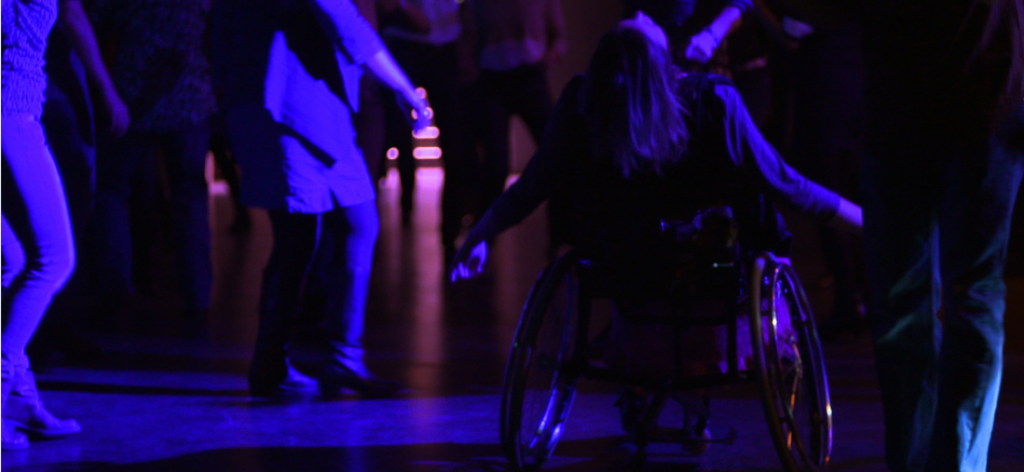
LOVE, SEX AND ROCKNROLLSTUHL
Review by Panchali Kar Image (above) from the film A very powerful documentary, ”Love Sex and Rock'n'Rollstuhl” by Susanna Wustneck, explores the unsaid premises of pleasure, eroticism, and sexuality amongst the physically challenged and the differently abled people. Disabled people are often treated as inanimate objects in their families and social circles. We often focus on to their meditation, survival, and daily activities, however they too are human beings with emotions, needs, expectations, which get avoided very often. Love, Sex and Rocknrollstuhl throws light on the delicate subject in a very intricate way. In this documentary we see a bunch of people meeting at an erotic workshop for the disabled, organized at Wendland in Germany. Through this workshop the disabled people explored each other and shared each others' fear, frustration, emptiness, pain, desire. It is a safe space for them to talk, express, and explore their sexuality and sexual desires with each other. We see people talking about love, and the desire of having a permanent girl friend; we see people falling in love; we see people feeling unsafe and unwanted in public spaces like a sauna or a discotheque; we see people living everyday with sexual starvation; we see people feeling out of place because the world forgets to takes their sexuality into consideration and treat them as cisgender and heterosexual by default, we see the fear of being rejected for not being 'normal' enough. These are the everyday fears of the physically challenged and the differently able people, which are grossly ignored in the society. This film does the much needed job of normalizing the relationship between disability and desire. The participants speak their mind uninhibitedly which passes across a firm message: people with disabilities have desire just like the rest of us. Technique wise the movie is very sleek and the whole focus is on the subject. Beautiful close ups capture the expressions of the participants of the workshop. Very subtle background score with adequate use of ambiance sound keeps up to the natural flow of the movie. Use of ambient light also adds up to the look. The strongest part of the movie is in it's research and background work. Overall a brilliant project.
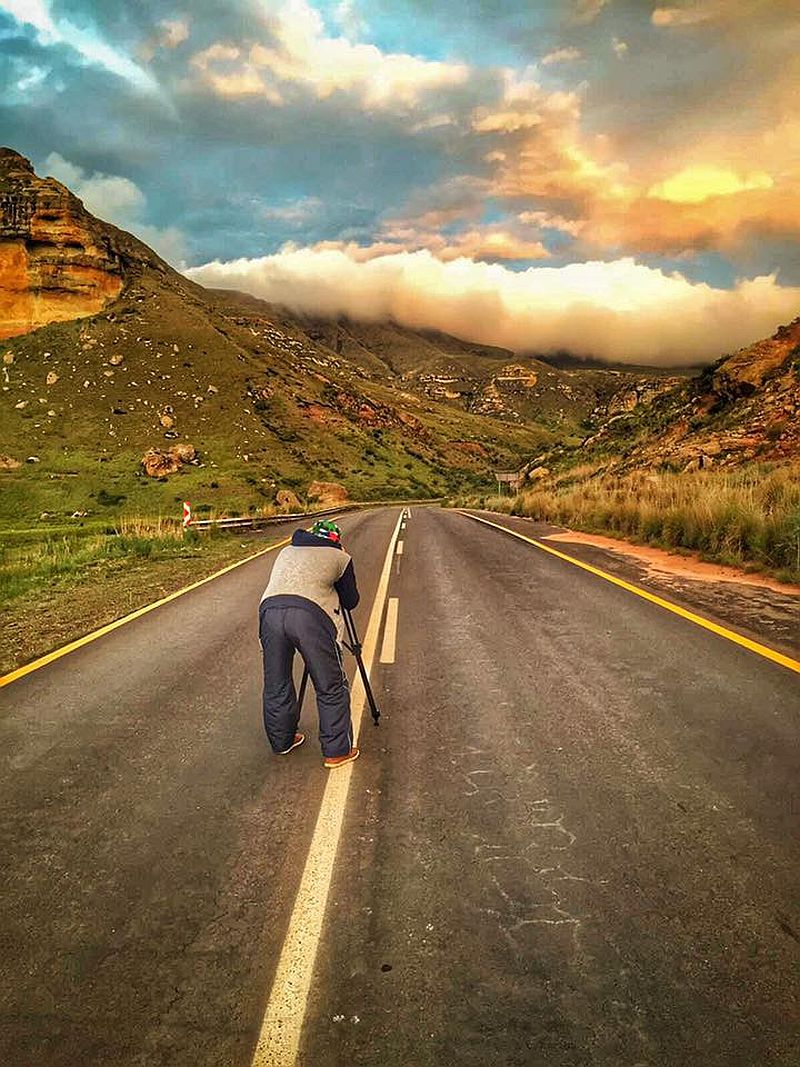
THIS IS OUR AFRICA, THIS IS US
Review by Daniela Lucato A film by Michael van Zyl This documentary presents us with the Golden Gate Highlands Park in South Africa in its multiple aspects. The environment guides us through the history of Golden Gate. The park was established in 1963 for the protection and conservation of its beauty and also as a symbol of national heritage. The different layers deposited in the geological eras reveals the age of this place. The park is a stunning place not only for the people living in the nearby town of Clarens, but also for the huge variety of animals who makes it so special. There are seven different types of antelopes, and there's also zebras, elands, springboks, blesboks and black wildebeest (saved from extinction) living there. If we go back in history, multiple dinosaur species of different sizes have been confirmed to have lived in the Golden Gate and fossilized eggs of unborn dinosaurs have been found. The earth always reveals more treasures. Besides its beauty and magic, the area was also the setting for several wars between the Basotho, English and Boer. Cannibalism was also a widely spread phenomenon: to avoid starvation, during these wars 7,000- 10,000 people were practicing cannibalism. There are also signs of the natives in the popular drawings on the rocks. Mostly representing animals; they give witness to their passage through this place and locals have much respect for these testimonies. This documentary has a traditional structure of interviews and landscape views and was a great addition to our Reviews May 2017 issue. It has the insight of people who spent their life in Golden Gate Highlands and in the surrounding area. They tell short anecdotes about their lives and still, after a lifetime, they continue to be amazed by their surroundings. “I feel lucky to live here”, says one of the interviewed with a smile on her face. And we really believe her.

THIRU (GANGAI)
Review by Panchali Kar A film by Arudra Saravanakumar Selected as the best film in the LGBT films section was Thiru (Gangai), however this film deals with two very important issues: apart from normalizing LGBT issues, it also talks about Road Safety. A simple story told in a simple way is the biggest virtue of the film. We see a man riding on his bike while talking over the phone all the time. Also he never wears a helmet. He crosses path with a Hijra time and again, but tries to avoid her all the time, so that she can't ask him for money. One day he meets with a road accident; it is the same Hijra who saves his life. This film is a breath of fresh air, and larger than life. It is shown that the Hijra person has donated blood to save the life of the rider, which is a ray of hope, because in reality, people from the Hijra community aren't allowed to donate blood. This film breaks through the practice of discrimination. Also the last scene where the Hijra person has brought a helmet for the rider is beautifully crafted. The road safety messages are subtly given without being preachy. Thiru (Gangai) did well in the technical departments as well. The performances by the actors are believable. Beautifully taken top shots and close ups, neat editing, etc add up to the strength of the film. The accident scene is very smartly designed. A neat story telling in a short span of time is a tough job and Thiru (Gangai) delivered it to perfection.
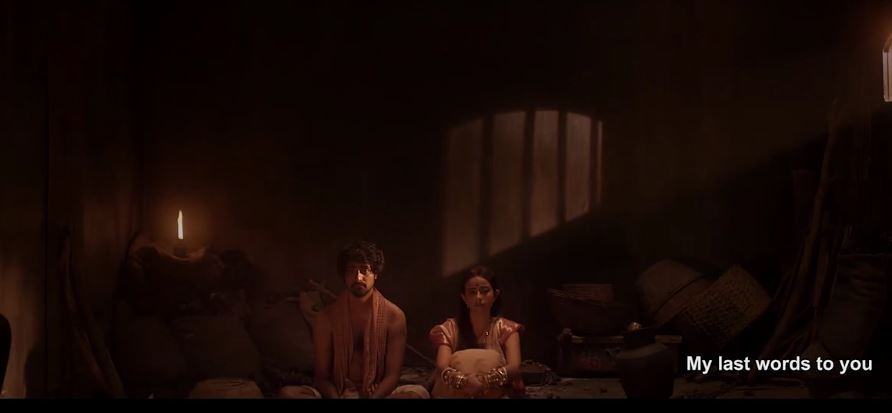
SHESH KOTHA
Review by Arindam Bhunia A film by Aarambhh Singh and Wistling Woods After birth of a death child when each and everyone was shocked and extremely upset, all at once the mother herself broke out in laughter...The award winning short film Shesh Kotha unveils two totally conflicting and antithetical character of women-nature. Women with life-giving and nurturing aspects of nature is called a ‘mother’ in the contrary women can be devilish, merciless and even brutal also. This genuine truth has perfectly and impressively represented in this film. In the film, for the sake of lineage and succession a woman day by day executes merciless work but another helpless feeble woman sacrifices the sin. When the husband is barren or infertile then the question arises, who will carry away the ancestry? And particularly in this matter our society is still in the Bronze Age where women always are the victim. Here also the same thing happened. The mother-in-law forces the newly married bride Kinkini to have an illegal relation with the bounded slave of the same Haveli. Circumspectly the bride losses her heart to the poor and helpless dumb slave. But, regrettably she was not a darling of a fairy tale. Kinkini was totally in the dark about the fact that the day when she told her mother-in-law about her conception and requested her to set the slave free; that day was the last day of her paramour. The terrible news came to her when she was in advance stage. After giving birth of a dead child she breaks out in laughter then cries and thanks the super Devine for the JUSTICE. Man behind the camera has elegantly taken us in the early 20th century of Bengal. Through the whole 18 minutes film director Aarambhh keeps well battened down in the slightly stylized performance, allowing music score to bloom. Every film actor has performed their best to make the characters authentic and non-fictitious. Especially the main two characters were pre-eminent. Production design and costuming are aces, and not allowed to overwhelm the picture. Undoubtly as a student filmmaker director Aarambhh Singh has done a brilliant work as we can feel the maturity with which the movie is shot. Numerous option of topics are there before a filmmaker to make his film a Hit but some deviant film directors can put at risk and take this kind of topic. Today in the so called move along world, also a wide-range of people are there who are still mentally backdated and do not believe in women empowerment, women esteem and admiration. We should really thank and appreciate directors like Aarambhh Singh who at least have taken an attempt to take such sensitive issue to develop for the right of humanity.

THE PUNISHMENT
Review by Panchali Kar A film by Rohit Gupta The punishment by Rohit Gupta is a film about the dark truth of witchcraft and other superstitious rituals, still widely practiced in the remote villages of India. Most of these practices are associated with lack of proper education. However if we did deep into the issue we get to see the social politics behind such barbaric customs. It is not just the lack of knowledge or exposure towards science always, but the background is way more deep rooted and horrific. In the film we see how a young woman is tagged as a witch, grossly beaten up, and subjected to various physical tortures. From the conversations we get to know that the lady's husband has died and the people around has held her responsible for the demise saying that she has eaten up her husband's soul. The lady was screeching for a drop of water, however the fellow dwellers of the village refused to give her any water to quench her thirst, and asked her to drink blood instead. The lady was held hostage in the filthiest of the conditions and men raped her at night. If we analyze the situation we get to see the nastier side of the incident. The core reason behind the barbarism isn't only lack of knowledge, but patriarchy and the politics of power has played a major role in it. Women in many cases are treated as liabilities to the family. Right to education and property are often violated. Her identity revolves around her husband. Girls are married off by her parents to get off the liability. Domestic violence and marital rape are justified because these women have no identity beyond her husband. And when she becomes a widow, she is a problem, both for her parents as well as for her in-laws. Sending her to exile in the name of pilgrimage, snatching away her rights and forcing her to practice a particular lifestyle, or killing her are the most popular ways to get rid of the women, so that they don't demand for their rights on the property. A big kudos to Rohit for being upfront about talking about witchcraft in his film. The film does not follow any rules of aesthetics. Jerky camera movements, rough post process, abrupt editing, shots taken from unusual camera angles, etc. add to the grossness of the subject. The actors, who mostly are the villagers, without any professional skills, did deliver an amazing performance.
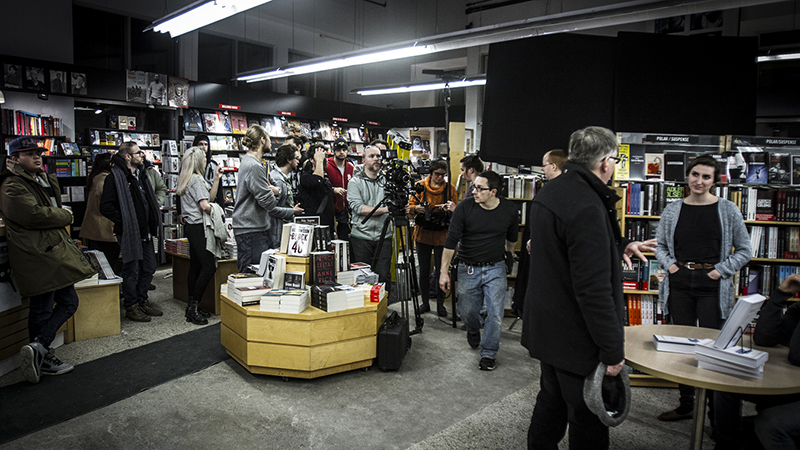
A MATTER OF TASTE
"For a first time filmmaker, David Labrecque brings an artistically humanistic experience to indie filmmaking." Review by E. J. Wickes A film by David Labrecque Our best Short Film selection this month is ”A Matter of Taste”, a clever story about a French librarian and writer whose own aesthetics become questioned by modern standards. Louis, becoming inspired by his Grandfather's sense of duty, decides to write a story about him and the city of Quebec. Labrecque, the director seems to be transferring his own love of the city into Louis's construct, lending the main character a touch of romanticism.
We open as Louis begins to write the homage to his grandfather, a WWII veteran, segueing into a smooth cut to the book store. The writer adds an almost a cynical touch by having a random customer ask the clerk for a book about meatballs, which sets up the entire story-line. Our random customer happens to stroll by Louis's book signing table, not easily slipping past his sales pitch. And in the process, our poor writer gets upstaged by the clerk as she locates one of the last editions of “The Ultimate Guide to Meatballs”. The perspective customer then courteously offers some complimentary small-talk and politely retreats with his new found treasure. On his way home, in a beautifully quaint scene, Louis passes one of those little free library boxes that have become all the rage lately. A great reference and a nice contemporary touch with the location search and art direction. I loved how he passes by, making you wait for the satisfaction of him coming back to it. And the plot thickens... We move to dinner among friends where Louis and his loving girlfriend are served meatballs for dinner! As artists, I'm sure many of us have had experiences with similarly cruel ironies. The film develops into a fine resolution with humor and wit along the way. The cast is natural and unpretentious, building a pleasing narrative that is very easy and comfortable to follow. For a first time filmmaker, David Labrecque brings a well crafted and an artistically humanistic experience to indie filmmaking.

OCEANIC ALIENS
Review by E. J. Wickes Film by Mike Johnson It has been said that we know more about outer space than we know about our own oceans. The disproportionate amount of people and time dedicated to space exploration far exceeds the amount of people who have actually seen the ocean floor. And this short film by Mike Johnson drives the point well. Almost like a video game I saw recently, alien-like life forms that most of us could never imagine, live here right under our noses. Without having to traverse the depths many of these bio-luminescent creatures converge close to the surface to feed. Some are shape shifting in nature and compiled of several different life-forms coexisting as one complete organism. The cinematography is precise and provides very nice examples of some of these unusual creatures. Specializing in wildlife and outdoor photography, Mike has done a variety of television and documentary work. This feature film was the result of two dives he did in Kona, Hawaii. Ironically Mike was unable to identify all of the species with the information he was able to access.

Arindam Bhunia is a marketing manager in an MNC with more than eight years of work experience in electrical field. Apart from his corporate job, he has interest in cultural activities so he joined Human Lab Corporation as Chief Executive Officer. He oversees strategic planning for film, television and video game production, marketing and distribution for the company’s business verticals worldwide. He is also responsible for overseeing finance, legal, labour relations, technology and HLC Studio operations.
 Panchali Kar is a Dancer, Choreographer, Actor and Filmmaker. In addition, Panchali is a devout advocate for egalitarian social change, is affiliated with the NGO, Responsible Charity and currently working on a photo documentary on LGBT rights. She is an avid scholar and veteran of the performing arts and a seasoned instructor. Panchali maintains several degrees in the Arts including a M.Mus degree. Ms. Kar is also affiliated with AKTO, a Kolkata theater group based in the city in which she resides.
Panchali Kar is a Dancer, Choreographer, Actor and Filmmaker. In addition, Panchali is a devout advocate for egalitarian social change, is affiliated with the NGO, Responsible Charity and currently working on a photo documentary on LGBT rights. She is an avid scholar and veteran of the performing arts and a seasoned instructor. Panchali maintains several degrees in the Arts including a M.Mus degree. Ms. Kar is also affiliated with AKTO, a Kolkata theater group based in the city in which she resides.
 Shevaun Cavanaugh Kastl is an award-winning actress, writer and producer currently living in NYC. Her production company, Mad About Pictures, has produced three films all currently playing the festival circuit. "The Mourning Hour", her most recent film, just took top honors at The Williamsburg Independent Film Festival in Brooklyn, NY. She is currently writing a thriller feature film but continues to pursue her acting career and can be seen on television and online in episodes of Revenge, Criminal Minds and Heroes.
Shevaun Cavanaugh Kastl is an award-winning actress, writer and producer currently living in NYC. Her production company, Mad About Pictures, has produced three films all currently playing the festival circuit. "The Mourning Hour", her most recent film, just took top honors at The Williamsburg Independent Film Festival in Brooklyn, NY. She is currently writing a thriller feature film but continues to pursue her acting career and can be seen on television and online in episodes of Revenge, Criminal Minds and Heroes.
 Sandip Pratihar is an award-winning film director, script writer and filmmaker. As a screenwriter, film director and independent filmmaker, he is very pro-active and follows his calling to communicate artistically intrinsic social messages. From West Bengal, India, Sandip is currently living in Kolkata. He has directed three films all currently playing the festival circuit. The short film "SITA", is his most recent work, just took top honours at sixteen International film festivals.
Sandip Pratihar is an award-winning film director, script writer and filmmaker. As a screenwriter, film director and independent filmmaker, he is very pro-active and follows his calling to communicate artistically intrinsic social messages. From West Bengal, India, Sandip is currently living in Kolkata. He has directed three films all currently playing the festival circuit. The short film "SITA", is his most recent work, just took top honours at sixteen International film festivals.
 Daniela Lucato started acting in Padua, Italy. She's lived in Rome, Wellington and Berlin. In 2013 she wrote and directed the theatre piece “Call Me Reality” that debuted in several theater festivals. The Birthday (2014) is her first short film, written and directed in Mandarin and English. "Connecting Fingers" (2015) is her last dance-theatre production and "When I Dance" (2016) is her first feature documentary. Daniela is currently in pre-production on a short film and writing the script for her next feature.
Daniela Lucato started acting in Padua, Italy. She's lived in Rome, Wellington and Berlin. In 2013 she wrote and directed the theatre piece “Call Me Reality” that debuted in several theater festivals. The Birthday (2014) is her first short film, written and directed in Mandarin and English. "Connecting Fingers" (2015) is her last dance-theatre production and "When I Dance" (2016) is her first feature documentary. Daniela is currently in pre-production on a short film and writing the script for her next feature.
 E. J. Wickes is a visual artist and the Managing Editor of Cult Critic Film Magazine, as well as the creator and publisher of The Metamodern Magazine. His aesthetics lie somewhere in the vortex between fine art painting and filmmaking. Eric has worked in the Art Department on a variety of Hollywood, TV and independent film productions and as the Creative Director of HLC Studios, he oversees the company's media and publishing division.
E. J. Wickes is a visual artist and the Managing Editor of Cult Critic Film Magazine, as well as the creator and publisher of The Metamodern Magazine. His aesthetics lie somewhere in the vortex between fine art painting and filmmaking. Eric has worked in the Art Department on a variety of Hollywood, TV and independent film productions and as the Creative Director of HLC Studios, he oversees the company's media and publishing division.


